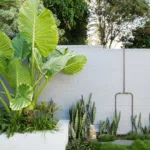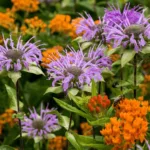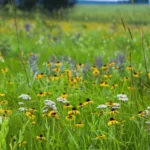
Beautiful flowers gardenia Plants For Your homes
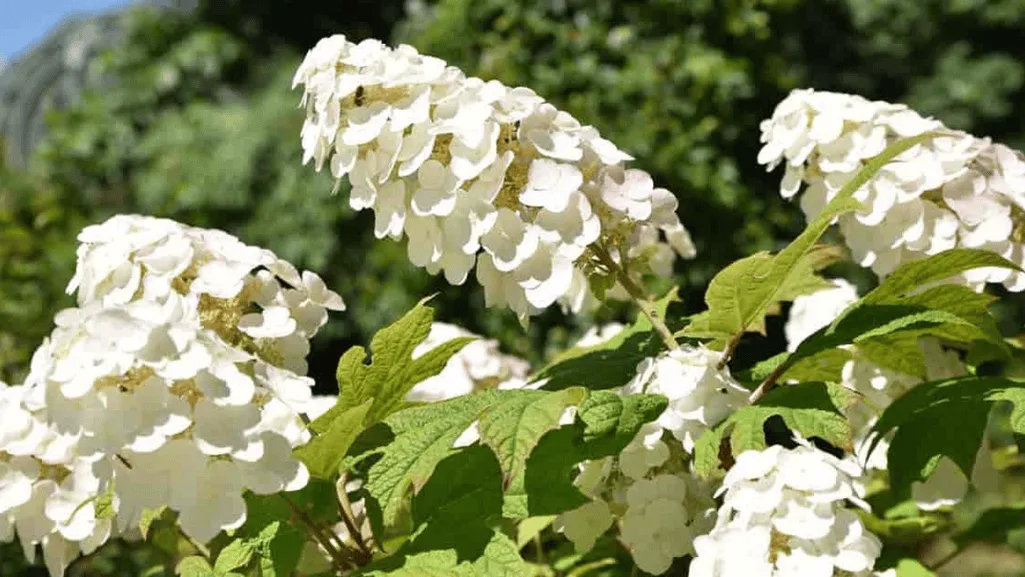
Oakleaf hydrangeas are a show-stopping, low‑maintenance plant that adds season‑long interest to the garden. With large, lobed leaves that echo oak foliage and cone-shaped flower clusters that open creamy white in early summer and often blush to pink or red as they age, these shrubs deliver color from spring into fall — plus winter texture from exfoliating bark. Hardy in USDA zones 5–9, oakleaf hydrangeas suit borders, woodland gardens, containers, and mixed plantings.
Who this plant is for: gardeners who want dramatic foliage, dependable summer flowers, and vivid fall color without high maintenance — from beginners to experienced hobbyists.
Transform your outdoor space with an elegant plant prized for bold, oak-like foliage and long-lasting summer flowers. Oakleaf hydrangeas (Hydrangea quercifolia) combine distinctive lobed leaves, textured, exfoliating bark, and cone-shaped bloom clusters to give layered interest from spring through fall. They’re slow-to-moderate growers, sturdy in many settings, and a handsome choice whether used as specimen shrubs, foundation plantings, or in woodland edges.
Oakleaf hydrangea is part of the Hydrangea genus and stands out within hydrangea species for its deep-lobed, often dark‑green leaves that resemble oak leaves. The cone-shaped clusters (panicles) of blooms typically open creamy white in early summer and — depending on cultivar — age to soft pinks or richer red tones. In winter, the exfoliating bark provides architectural texture when the plant is otherwise dormant.
Most oakleaf hydrangeas exhibit steady, clumping growth. While growth rates vary by cultivar, a common range is roughly 1–2 feet of vertical growth per year under good conditions; ultimate sizes span from compact types suitable for containers up to larger shrubs that may reach about 8–12 feet tall at maturity. Seasonal interest includes spring leaf emergence, summer blooms, and striking fall leaf color — often shades of red, orange, and purple — followed by winter bark texture.
Experts such as Ryan McEnaney and Kelly Funk recommend planting oakleaf hydrangeas in well‑drained soil with some afternoon shade in warmer climates to protect leaves and preserve fall color. For quick reference, see the quick facts: bloom season — early summer; hardiness — USDA zones 5–9; typical mature height — 3–12 ft depending on cultivar.
Enhance your garden with oakleaf hydrangeas — a plant that rewards correct siting and planting with season-long interest. Below is a practical, zone-aware planting guide plus a concise checklist so your newly planted shrub establishes quickly and reliably.
Plant oakleaf hydrangeas in early spring or early fall. In colder zones (5–6) spring planting gives roots time to recover before winter; in warmer zones (7–9) fall planting helps establish roots without summer heat stress. Choose a site with well‑draining, slightly acidic soil and partial shade — morning sun with afternoon protection is ideal to preserve leaf color and prevent scorch.
Follow these precise steps when planting an oakleaf hydrangea:
Troubleshooting tip: if newly planted leaves wilt, check root ball depth and moisture — loosen soil around crown, water deeply, and ensure root crown is not buried. For planting in containers, choose compact varieties and use a high-quality potting mix with good drainage.
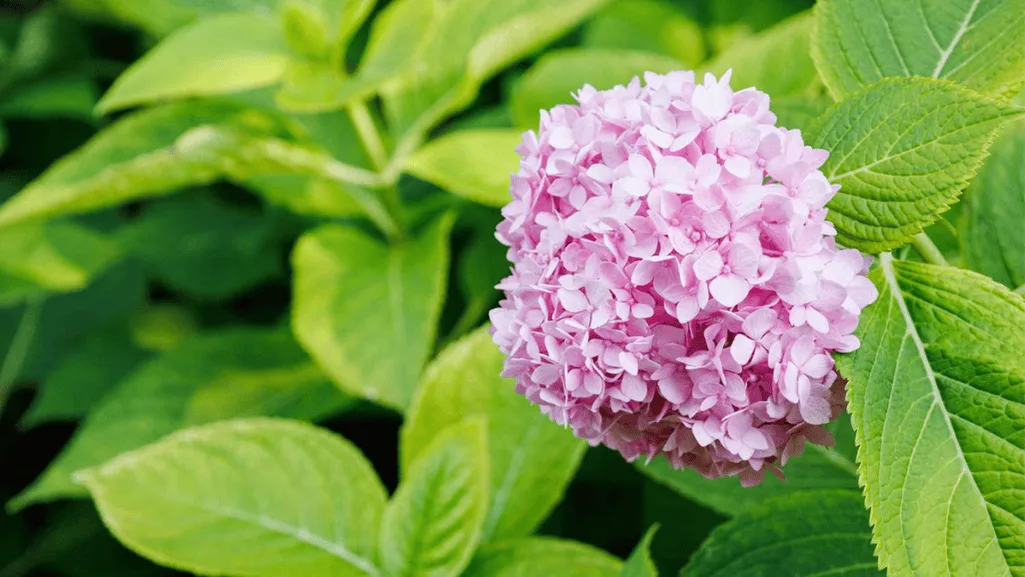 Soil, Water, and Sunlight Requirements
Soil, Water, and Sunlight RequirementsHealthy oakleaf hydrangeas start with the right balance of soil, water, and light. Below are practical, evidence‑based recommendations to create a well‑draining loam with good moisture retention that suits this hydrangea species.
Oakleaf hydrangeas favor slightly acidic, well‑draining soils. Aim for pH roughly between 5.0 and 6.5. For a planting hole, mix native soil with about 25–40% compost or well‑rotted manure to improve nutrient content and water retention. If drainage is heavy clay, add coarse sand or horticultural grit to improve texture; if soil is very sandy, increase organic matter to hold moisture.
Quick pH test: use a home soil kit or send samples to your local extension. To lower high pH, incorporate elemental sulfur or acidic compost. To raise very low pH slightly, use lime cautiously and retest after a few months.
Water deeply and infrequently rather than light daily sprinkling. During establishment, provide deep watering 1–2 times per week (adjust for rainfall and soil type) — roughly 2–3 gallons per small shrub per session. In summer or drought, increase frequency. Water at the base to keep foliage dry and reduce fungal risk.
Light recommendations by zone: in cooler climates (zones 5–6), oakleaf hydrangeas tolerate and often appreciate more sun (morning and partial afternoon) to encourage strong flowering; in warmer zones (7–9) favor partial shade (morning sun, afternoon shade) to protect leaves and maintain intense fall color.
Fertilize sparingly: apply a balanced, slow‑release fertilizer in early spring (follow label rates). Avoid high‑nitrogen feeds that encourage lush foliage at the expense of flowers.
By testing soil, amending with organic matter, matching light to your zone, and using deep, targeted watering, you’ll create ideal growing conditions for oakleaf hydrangeas so they can develop lush foliage, abundant clusters of blooms, and vibrant fall color.
Regular pruning and maintenance keep oakleaf hydrangeas healthy and looking their best. Follow simple seasonal steps to protect flower buds, encourage sturdy stems, and reduce disease risk — minimal effort that rewards you with better flowers, fuller foliage, and stronger habit.
Oakleaf hydrangeas bloom on old wood, so the correct time to prune is immediately after flowering (late summer in most areas). Pruning in late winter or early spring risks removing next year’s flower buds. Remove dead, damaged, or crossing branches first, then lightly shape as needed. If major renewal is required, do it gradually over two seasons to avoid losing all flowering stems at once.
Always use clean, sharp tools to make precise cuts — pruning shears for small stems, loppers for larger branches. Sterilize tools between cuts when removing diseased wood to limit spread of diseases.
Deadheading spent blooms after flowering keeps beds tidy and can improve appearance, though oakleaf hydrangeas also look attractive when older blooms are left for winter texture. When shaping, aim for a natural form — avoid removing more than one‑third of living growth in a single season to preserve vigor.
When removing large or diseased branches, cut back to healthy wood and dispose of infected material — do not compost diseased branches. Consider a staged renewal: remove a few older stems at ground level each year to encourage fresh basal growth without losing all blooms at once.
Here’s an extended maintenance checklist to follow each year:
With these pruning and maintenance practices, your oakleaf hydrangeas will develop stronger stems, healthier leaf growth, and more reliable bloom displays while minimizing the risk of pests and diseases.
Oakleaf hydrangeas are generally hardy, but like all hydrangeas they can experience pests and fungal diseases under the right conditions. Early detection and cultural controls are the best first line of defense — good spacing, careful watering, and proper pruning go a long way toward keeping plants healthy.
Powdery mildew shows up as white or grayish powder on leaves and stems and thrives in humid, stagnant air. Leaf spot appears as brown or tan spots (sometimes with reddish halos) and can lead to premature leaf drop. Botrytis (gray mold) attacks flowers and buds in cool, wet conditions and can cause buds to collapse before opening.
Practical prevention and control (start here):
When to call a pro: if symptoms spread rapidly, recur yearly despite cultural fixes, or if you need help identifying a pest or disease, contact your local extension or a certified arborist for diagnosis and treatment options.
Careful cultural practices—proper watering, spacing, pruning, and sanitation—are the most reliable, low‑impact ways to keep oakleaf hydrangeas healthy and to minimize the need for chemical controls.
Oakleaf hydrangeas (Hydrangea quercifolia) come in a range of varieties to suit different garden needs. Some are compact and ideal for containers, while others develop into larger shrubs that provide structure and long-lasting flowers. Below are a few popular cultivars and how they differ in size, bloom clusters, and best uses.
Jetstream is prized for compact habit and cold hardiness, making it a strong choice for small gardens and containers; its bloom clusters can reach about 8–10 inches and hold color well. Alice is a bolder selection — a taller, specimen plant that can reach roughly 8–12 feet in ideal conditions, with dramatic 10–14 inch panicles that show long-lasting color. Ruby Slippers is celebrated for rich color transition: blooms open creamy white and mature to deep ruby red on many sites; it remains relatively compact and is versatile in borders or mass plantings.
When selecting a cultivar, consider mature size, bloom season, and placement. Compact types like Jetstream and Ruby Slippers suit containers or small beds (space 3–5 feet apart); larger varieties such as Alice are best as specimen shrubs or background plantings (space 6–10 feet apart). Match cultivar hardiness to your USDA zone and preferred garden role.
Quick cultivar comparison:
Consider sourcing plants from reputable nurseries and check local hardiness and performance for each cultivar. If you want help choosing the best oakleaf hydrangea for your space, use the size and spacing guidance above to match a cultivar to your garden’s scale and sun exposure.
Oakleaf hydrangeas are remarkably versatile — many oakleaf varieties do well in containers as well as in-ground plantings. For containers, choose compact cultivars (for example, Jetstream or Ruby Slippers) and a pot with good drainage. In the landscape, use larger specimens as foundation shrubs, specimen plants, or in woodland borders for layered foliage interest through the seasons.
When planting in-ground, space plants according to mature size: compact types 3–5 feet apart; mid-size 4–7 feet; larger cultivars 6–10 feet. This spacing improves air circulation and reduces disease pressure while allowing a natural habit to form. Use oakleaf hydrangeas as a mid‑border anchor, a woodland understory plant, or a textured contrast against evergreens.
Container specifics: start with a pot at least 10–15 gallons for compact cultivars and 20–30+ gallons for larger shrub selections. Use a high‑quality potting mix blended with 20–30% compost for moisture retention and feeding. Ensure a thick drainage layer and raise pots slightly off the ground to prevent waterlogging.
Repot when roots begin to circle or show at the drainage holes — typically every 2–4 years depending on growth. When repotting, refresh media with compost and a balanced slow‑release fertilizer; maintain a 2–3 inch mulch layer at the surface to keep roots cool.
Design pairings by season: spring bulbs and ferns highlight early foliage; summer perennials such as salvias and nepeta extend color; autumn sedums and ornamental grasses complement the hydrangea’s fall tones.
By planning pot size, potting mix, and placement — and by choosing the right varieties for containers or beds — you can use oakleaf hydrangeas to create year‑round garden structure and seasonal color.
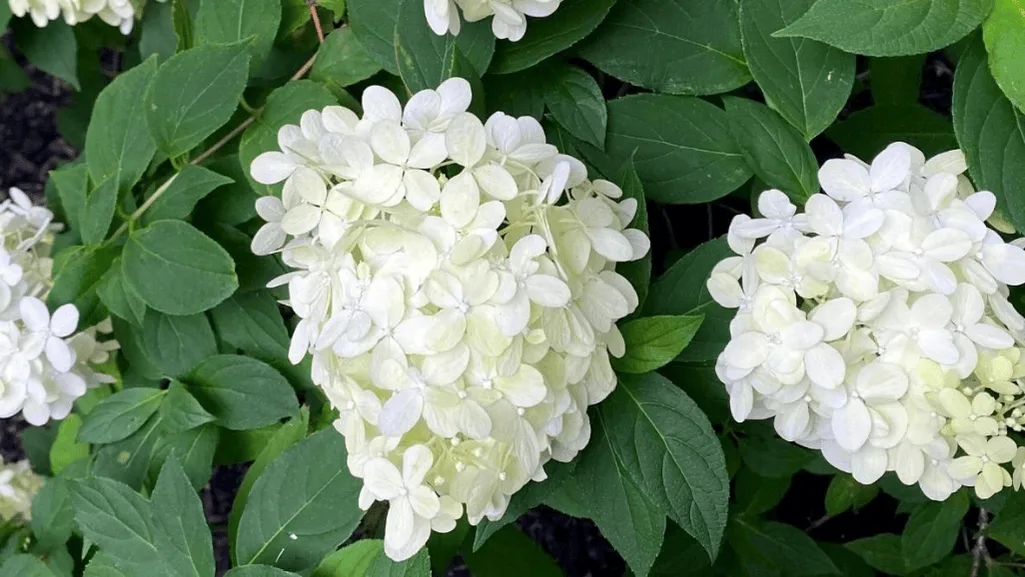 Seasonal Care and Winter Protection
Seasonal Care and Winter ProtectionPreparing for seasonal change protects your oakleaf hydrangea’s roots, buds, and bark so it returns strong each year. Below are practical, zone‑aware steps for late fall through early spring that minimize winter damage and set the shrub up for abundant summer flowers and vivid fall color.
In late fall, apply a 2–4 inch layer of organic mulch (shredded bark or leaf mulch) around the root zone to insulate soil and retain moisture. Keep mulch a few inches away from the stem to avoid rot. In colder climates (zones 5–6), a thicker mulch (up to 4 inches) gives extra protection; in warmer zones (7–9) 2 inches is usually sufficient.
Where winters are severe, protect buds and canes from desiccation and wind by wrapping loosely with burlap or an open weave fabric. Do not wrap tightly (this can trap moisture and cause fungal issues) — leave some airflow. Remove wraps in early spring once the danger of hard frosts has passed and new growth begins.
As spring arrives, check for new buds and gently remove winter debris. Prune only damaged or dead wood — remember oakleaf hydrangeas flower on old wood, so heavy pruning now can reduce bloom. Light fertilization with a balanced, slow‑release formula can help the plant recover; water thoroughly after feeding.
Container plants: move pots to a sheltered spot or garage in the coldest weeks if possible, or elevate them off cold surfaces and protect the root zone with extra mulch or insulating wrap. Remove any winter protection progressively as temperatures moderate.
These targeted seasonal steps — correct mulch depth, considered use of burlap in colder zones, and gentle spring revival — will protect roots and buds and help your oakleaf hydrangea produce healthy stems, abundant summer blooms, and vibrant fall foliage year after year.
Oakleaf hydrangeas are a versatile, low‑maintenance shrub that can transform your outdoor space with bold foliage, long‑lasting summer blooms, and striking fall color. Whether planted in containers or in the ground, the right cultivar and proper care deliver year‑round interest — from spring leaf emergence through winter bark texture.
Key takeaways: plant in well‑draining, slightly acidic soil, give morning sun with afternoon partial shade in warm zones, keep moisture consistent with deep watering, and protect roots with mulch. Prune lightly immediately after flowering to preserve next year’s blooms and follow seasonal care tips for winter protection.
Explore different varieties — compact types like Jetstream or Ruby Slippers for containers and smaller beds, or larger specimens like Alice for dramatic height. Match cultivar size and sun exposure to your site, and your oakleaf hydrangea will be a long‑lasting, colorful addition.
Ready to add one to your landscape? Check your USDA zone, pick a cultivar that fits your space, and follow the planting and seasonal care checklists in this guide — or download the quick planting checklist to get started.
They stand out for large, oak‑shaped leaves, cone‑shaped flower clusters, strong fall foliage, and attractive exfoliating bark that adds winter interest.
Early spring or early fall. In cold zones plant in spring; in warmer zones fall planting helps roots establish without summer heat stress.
Well‑draining, slightly acidic soil (pH ~5.0–6.5) amended with organic matter like compost produces best results.
They do best in partial shade — morning sun and afternoon protection — though cooler climates allow more sun exposure.
Keep soil evenly moist. During establishment water deeply once or twice weekly (adjust for rain and soil); established shrubs need less frequent deep watering.
Prune right after flowering (late summer) to avoid cutting off next year’s buds; only remove dead wood in early spring.
They can get powdery mildew, leaf spot, or Botrytis under humid or poorly ventilated conditions — proper spacing, watering at the base, and pruning for airflow help prevent problems.
Popular cultivars include Ruby Slippers, Alice, and Jetstream — each varies in size, bloom cluster length, and seasonal color.
Yes — choose smaller cultivars like Ruby Slippers or Jetstream, use a 10–20+ gallon pot with good drainage, and refresh potting mix periodically.

